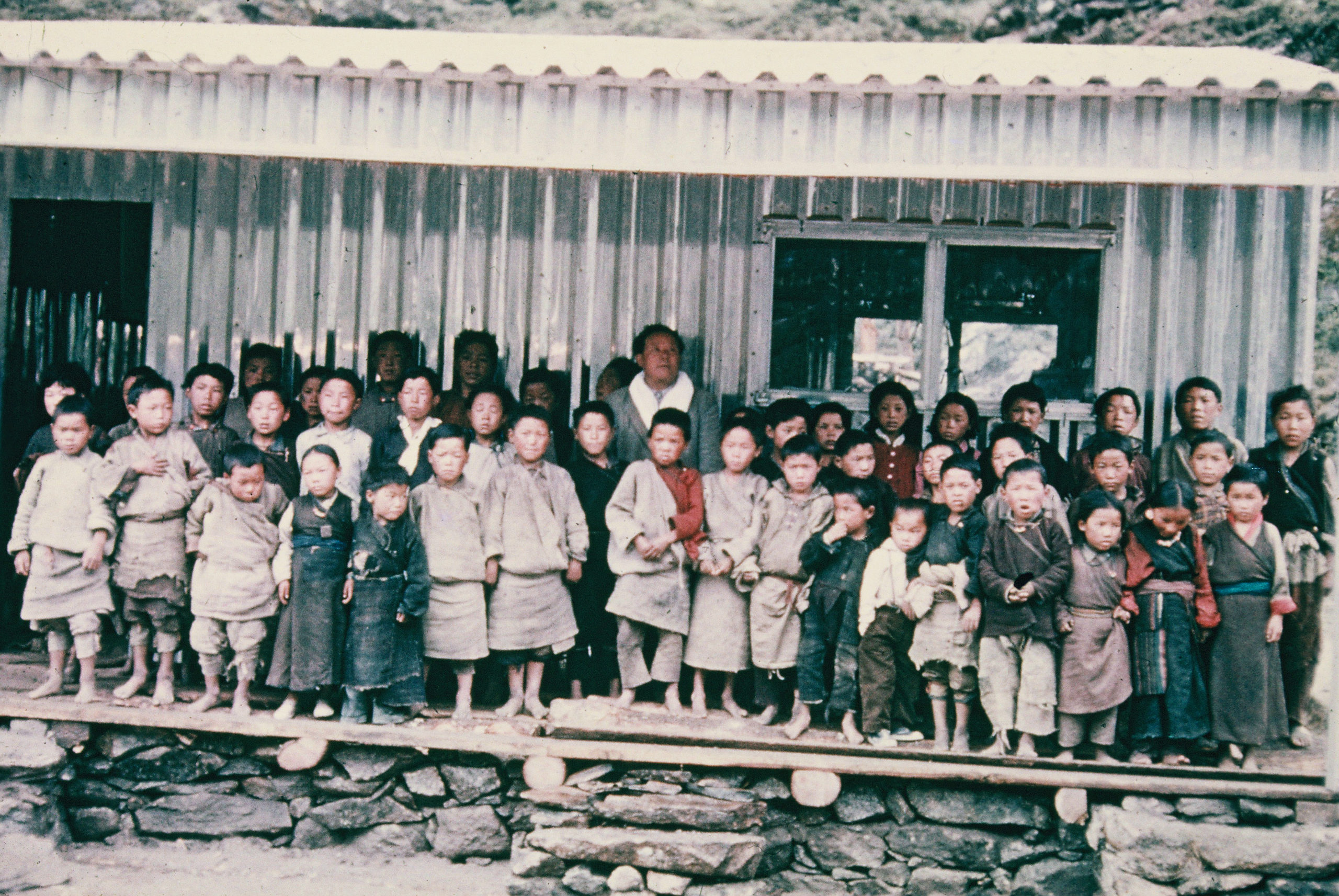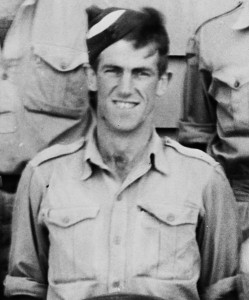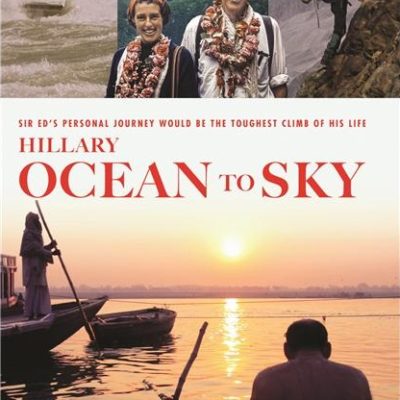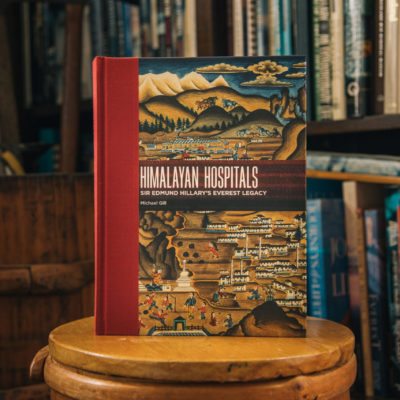About Sir Edmund Hillary
Help keep Sir Ed's legacy alive
Sir Edmund Percival Hillary (20 July 1919 – 11 January 2008) was a New Zealand mountaineer, explorer and philanthropist. On 29 May 1953, Hillary and Tenzing Norgay became the first climbers to reach the summit of Mount Everest.
Following his ascent of Everest, Hillary devoted most of his life to helping the people of Nepal through the Himalayan Trust, building schools, hospitals, bridges, an airstrip, and much more.
Ever since Sir Ed and Louise Hillary founded the Himalayan Trust in the 1960s, they’ve inspired New Zealanders to give their time, money and support to help the people of Nepal through the Himalayan Trust.
Sir Ed always said his greatest achievement was his help for the people of Nepal.
“I declare that I have had a full life with much happiness and a share of sadness. I have little cause for complaint. If however some people in New Zealand feel I have made some contribution to the prestige of my country then they could best demonstrate this by continuing modest support to the Himalayan people I have worked with for so many years.” Sir Edmund Hillary

Sir Edmund Hillary
Edmund Percival Hillary was born in 1919 in the small farming town of Tuakau in New Zealand.
As a family the Hillarys were powerfully driven by high moral ideals such as peace, equality and helping others, values that were to surface later when he began his aid work in Nepal. In 1938 he and his younger brother Wrexford joined their father’s beekeeping business. As a conscientious objector Ed missed the first three years of World War II but by 1944 his belief in involvement (and his love of adventure) led him to enrol in the Royal New Zealand Airforce.
On Ed’s return to civilian life in 1945 he pursued his love of mountaineering in the Southern Alps where he learned his ice-climbing skills on the great ice peaks of Aorangi-Mount Cook and Tasman. A few years later, when the great Himalayan explorer Eric Shipton was leading a reconnaissance to the unexplored south side of Mount Everest, the NZ Alpine Club offered a team as companions on Everest, one of which was Ed.
In the autumn of that year they became the first men to see in its entirety the South Col approach that led to the summit of Everest. The rest is history. In 1953 John Hunt led an immaculately planned British expedition. In brilliantly fine weather on the 29th May 1953 his two strongest climbers, Ed Hillary and Tenzing Norgay, became the first men to set foot on the highest place on earth.
Overnight a beekeeper from New Zealand became supremely famous. In January 1958 he added the South Pole to his list of trophies. Where to next? The answer came in 1960 when Ed was in the Everest region leading an expedition studying high altitude physiology. At a camp one night he asked Sirdar Urkien what, above all, would he like for his children and the Sherpa people. Urkien asked for a school in his village of Khumjung. In June 1961, he kept his side of the bargain by building the first school in the Khumbu region of Nepal.
Twenty-six more schools followed, airstrips at Lukla and Phaplu, hospitals at Khunde and Phaplu, twelve health clinics, rebuilding a burnt-out Tengboche Monastery. Ed’s aid work was the great achievement of the last fifty years of his life and this work is continued through the Himalayan Trust.

Early Life
When Gertrude Hillary named her eldest son Edmund Percival, she might have been anticipating how well the name would sound as Sir Edmund. The small farming town of Tuakau, where Ed was born on the 20th of July 1919, was about as humble a birth place as one might find.. As an ambitious mother and trained teacher, Gertrude tutored her son so intensively at Tuakau Primary School that he entered secondary school two years ahead of his age group. The unintended consequence of this was that Ed went through five years of school and two years of university crippled by feelings of inadequacy. Despite an excellent brain, he was unable to settle down enough to pass even a single unit at university.
 In 1938, abandoning any ambition he might have had for a career dependent on a university degree, Ed joined his younger brother Wrexford in their father’s beekeeping business. Both Ed and Rex registered as conscientious objectors to World War II but by 1944 Ed’s belief in involvement – and his growing love of adventure – led him to enrol in the Royal New Zealand Airforce in which he became a navigator on Catalina float planes flying around the Pacific.
In 1938, abandoning any ambition he might have had for a career dependent on a university degree, Ed joined his younger brother Wrexford in their father’s beekeeping business. Both Ed and Rex registered as conscientious objectors to World War II but by 1944 Ed’s belief in involvement – and his growing love of adventure – led him to enrol in the Royal New Zealand Airforce in which he became a navigator on Catalina float planes flying around the Pacific.
On Ed’s return to civilian life in 1945 he pursued his love of mountaineering in the Southern Alps where he learned his ice-climbing skills on the great ice peaks of Aoraki-Mount Cook and Tasman. The first of the events that changed his life in the years 1951-53 was an invitation to join a New Zealand expedition to the Garwhal Himalaya.
This was the same year that the great Himalayan explorer Eric Shipton was leading a reconnaissance to the unexplored south side of Mount Everest. When the NZ Alpine Club offered the Garwhal team as companions on Everest, Eric replied that any two of them could join him. Ed was one of the two. They threw their gear aboard the nearest Indian train, travelled east to the Nepalese border and joined Shipton’s party in the foothills south of Mount Everest.
On this first encounter with a British Everest team, Ed hit the ground running. Three months of climbing at high altitude in Garwhal had brought him to a pitch of fitness and acclimatisation – and behind that was a decade of hard physical work in the bee-keeping business and a lot of load-carrying and ice-climbing in the New Zealand Alps.
School Projects
Key Facts
- Edmund Percival Hillary was born on the 20th of July 1919 in the small farming town of Tuakau in New Zealand.
- Ed Hillary was a mountaineer, an explorer and a philanthropist.
- On 29 May 1953, Ed Hillary and fellow mountaineer, Tenzing Norgay succeeded in climbing Mt Everest.
- Though he climbed Mt Everest, he considered his philanthropic work in Nepal to be his greatest achievement.
- He died on 11 January 2008 in Auckland, New Zealand.
Quotes from Sir Ed
- “It is not the mountain we conquer but ourselves.”
- “People do not decide to become extraordinary. They decide to accomplish extraordinary things.”
- “I am a lucky man. I have had a dream and it has come true, and that is not a thing that happens often to men.”
- “I think it all comes down to motivation. If you really want to do something, you will work hard for it.”
- “When you go to the mountains, you see them and you admire them. In a sense, they give you a challenge, and you try to express that challenge by climbing them.”
- “Human life is far more important than just getting to the top of a mountain.”
- “On the summit of Everest, I had a feeling of great satisfaction to be first there.”
- “I have enjoyed great satisfaction from my climb of Everest and my trips to the poles. But there’s no doubt that my most worthwhile things have been the building of schools and medical clinics.”
- “If you cannot understand that there is something in man which responds to the challenge of this mountain and goes out to meet it, that the struggle is the struggle of life itself upward and forever upward, then you won’t see why we go.”
- “Life’s a bit like mountaineering – never look down.”
- “While on top of Everest, I looked across the valley towards the great peak Makalu and mentally worked out a route about how it could be climbed. It showed me that even though I was standing on top of the world, it wasn’t the end of everything. I was still looking beyond to other interesting challenges.”
- “Human life is far more important than just getting to the top of a mountain.”
Some useful Links
Books to read
View from the Summit: The Remarkable Memoir by the First Person to Conquer Everest
by Sir Edmund Hillary
High Adventure by Sir Edmund Hillary
Beyond Everest – First Ascents of 23 Peaks and a Daring Rescue from a Crevasse Mark an Expedition Led by a Conqueror of Earth’s Highest Mountain by Edmund Hillary
Himalayan Hospitals by Mike Gill
Sir Edmund Hillary: An Extraordinary Life
by Alexa Johnston
EVEREST 1953
In 1953 John Hunt and his team he led an immaculately planned expedition and Hillary was from the beginning a contender for a summit party, a powerful climber on snow and ice, fiercely determined and known to acclimatise to high altitudes outstandingly well. For climbing high on the mountain he teamed up with Tenzing whose strength and experience at extreme altitude were unmatched.
All hopes rested on Hillary and Tenzing who on 28 May established their high camp at a point 2/3 of the way to the summit from the South Col. The day of their summit attempt, the 29th of May, dawned cloudless and still. By 9am they were on the South Summit examining a final ridge of steep ice interrupted by a 40 foot piece of rock now known as the Hillary Step. They chimneyed up between ice and rock and at11.30am they were on the summit, the first men to stand on the highest point on the surface of Planet Earth.

Life After Everest
In 1960, Ed was in the Everest region leading an expedition studying high altitude physiology. At a high camp one night he asked Sirdar Urkien what, above all, would he like for his children and the Sherpa people. …Urkien asked for a school in his village of Khumjung.
A month later when the village elders gave him permission to borrow the yeti scalp from their monastery, they required in return that he build a school. In 1961, he kept his side of the bargain by building the first school in the Khumbu region of Nepal. More schools followed, 26 in total over a period of 30 years. To make transport of building materials easier, Ed decided to build an airstrip, not an easy proposition in a mountain landscape. The site finally chosen was beside the tiny village of Lukla, now a small town with its airstrip the second busiest in Nepal.
In 1966 Ed fulfilled another ambition when he built a small hospital at Khunde and staffed it with New Zealand volunteers. A landmark achievement at Khunde came when Health Worker Kami Temba, after 20 years working at the hospital, was found a position at Fiji Medical School so as eventually to qualify as Dr Kami Temba, Medical Superintendent of Khunde Hospital.
The building of Phaplu Hospital followed in 1975 but tragically this was accompanied by the death of Ed’s much-loved wife Louise and his younger daughter Belinda who were flying in from Kathmandu to Phaplu. Despite this Ed continued visiting his projects every year up till the year of his death in 2008.
His aid work was the great achievement of the last fifty years of Ed’s life and the vehicle through which he channelled this work was his Himalayan Trust.
It was a remarkable occasion. The Head Lama of Tengboche carried out the official blessing. The forty pupils had grubby hands and smelly clothes – but their rosy cheeks and sparkling eyes were irresistible. It was a happy and satisfying occasion. When I left Khumjung on June 13th I little realised I was leaving behind what was to become a new way of life for me.

I declare that I have had a full life with much happiness and a share of sadness. I have little cause for complaint. If however some people in New Zealand feel I have made some contribution to the prestige of my country then they could best demonstrate this by continuing modest support to the Himalayan People I have worked with for so many years.

LEARN MORE ABOUT SIR EDMUND HILLARY
Our online shop offers resources that provide a rich insight into Ed’s life and achievements, written and produced by people who knew him personally. 100% of the funds from all sales go towards continuing Ed’s philanthropic work in the Everest region of Nepal. All purchases include free shipping to New Zealand and Australia.
Inquiries about the use of Ed Hillary intellectual property and naming rights please go to www.edhillary.com





